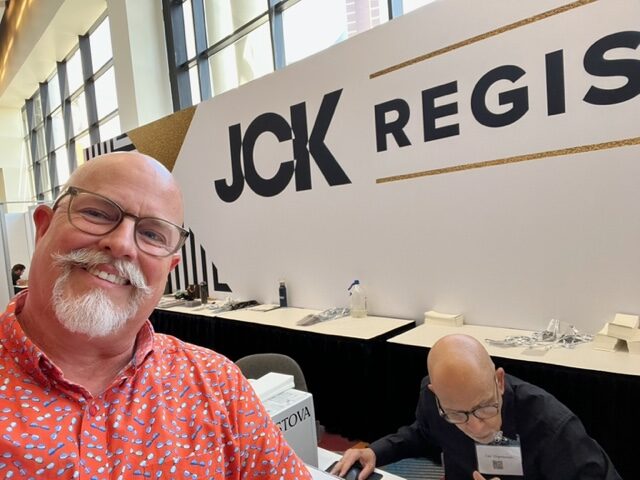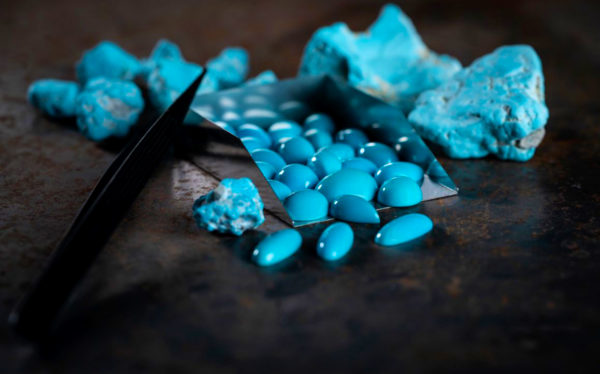I had a great time at the JCK Show in Las Vegas one month ago. It’s always been a great opportunity to meet people from all around the world. It’s a huge event bringing nearly 20,000 people to network with one another and propelling business opportunities to a whole other level.

This year, I met several people who asked me about the difference between natural and stabilized turquoise. Either way, turquoise is a beautiful & captivating gemstone, but if you want to maintain its beauty, you will want it to be stabilized. It’s important to know what stabilized turquoise is and the difference between natural turquoise. This subject is often surrounded by misinformation and confusion.
Why stabilize turquoise stone?
Turquoise, by nature, is a relatively soft, porous stone. When turquoise is mined, it comes in a wide range of different qualities determined by its color, hardness, and the mine it’s from. Turquoise is a blue-to-green cryptocrystalline mineral with a Mohs hardness of 3 to 6 and is always opaque. Turquoise can contain a matrix from other minerals or appear clean without any veining. The most common color has been compared to a robin’s egg blue, but the colors will range from blue with a slight hint of green or green with the slightest hint of blue. The matrix’s primary mineral content is copper & aluminum, but there are turquoise specimens with gold forming the veins creating its amazing character. Without stabilization, much of the turquoise cannot be used in jewelry because it will crumble when cut.

Unstabilized turquoise will absorb contaminants within the air we breathe, along with oils from our skin and our daily products. In time, turquoise will lose its brilliance & color as it becomes chalky, softer, and more fragile as it ages. Stabilization will enhance the hardness of the turquoise helping it maintain its natural beauty for many years of enjoyment.
Methods to stabilization
There are many stabilization methods out there, but it’s challenging to stabilize turquoise properly. When stabilizing isn’t done correctly, the turquoise can appear waxy. The idea is to fill the pores of the turquoise with a form of hardening solution such as clear epoxy, liquid plastic, or resin. Stabilization locks the color inside, keeping it from losing its brilliance and making it a much harder stone. Although, buyer beware, in some cases, sellers will sadly sell fat, oil, or wax-treated turquoise as a stabilized turquoise.
Other processes for stabilization
A newer form of stabilization is called pressurized impregnation, where the hardening solution is forced deep into the stone, creating a much stronger turquoise to last a lifetime. There is also a treatment worth mentioning, the Zachery Treatment. It’s named after James Zachery, an electrical engineer and turquoise enthusiast. The 1989 GIA article shared their findings after examining turquoise, which was treated using the proprietary Zachery Treatment. The GIA determined the treatment doesn’t use any foreign resin polymer or dies, leaving the turquoise harder than its counterparts.
I’m happy to confirm all the turquoise we sell has been properly stabilized or been Zachery Treated. Our turquoise will maintain its dazzling beauty for many generations to come.

